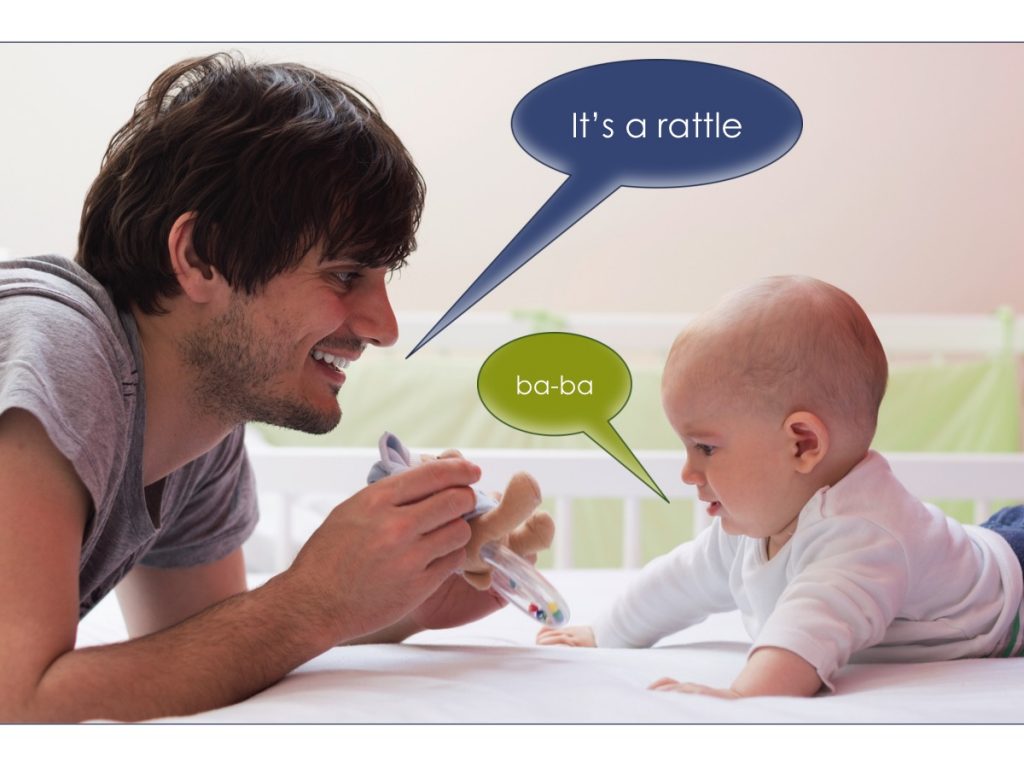
Another key feature of high quality interactions is back-and-forth interaction between adult and child. This is also called contingency. In back-and-forth interactions, the caregiver times her responses to a child’s behavior. For example, if a child babbles at a toy, her caregiver could respond by providing a label for the toy. That contingent response teaches the child language and actually helps wire the child’s brain.
Back-and-forth interactions can be verbal, like in the video of the teacher and child playing with the pretend fruit. They can also be nonverbal, like in the video of the mother and daughter building a block tower.
On the next page, watch the video of a mother and son during a book reading interaction.
-
- Back-and-forth or contingent interactions
- exchanges in which a caregiver times their responses to a child’s behavior
- Imitation
- observing then reproducing, or copying, a behavior
- Infant-directed speech
- a special tone and style of speech used to talk to young children. It’s also called parentese.
- Scaffolding
- the support a caregiver provides a child to help them achieve more than they would be able to accomplish on their own